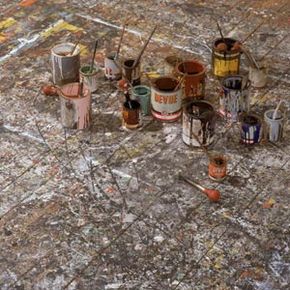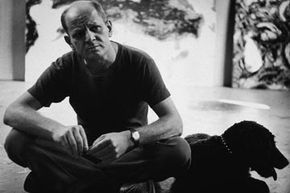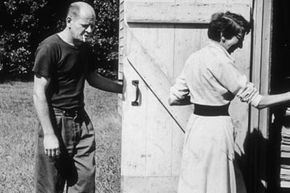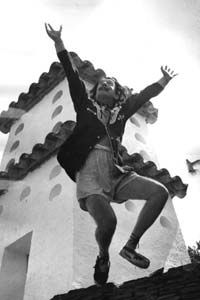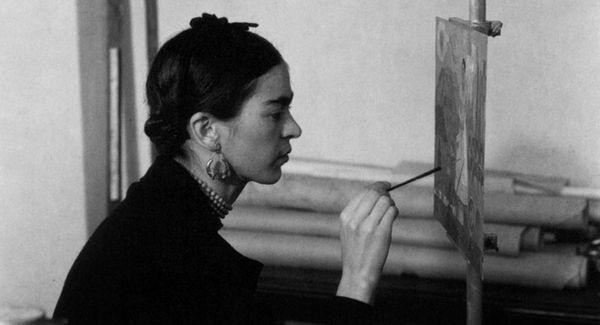One of the most well-known, and quintessentially American, artists of the 20th century is undoubtedly Jackson Pollock. Even if you think of his famous "drip" technique as something so simple a child could do it, his fame has been firmly cemented in the American consciousness. Public and private collections all over the world include Pollock's work, and one -- "Number 5 1948," discussed later in this article -- is reportedly the most expensive painting ever sold at auction, with a price tag of $140 million [source: Pilkington]. Pollock's life has become nearly as famous as his paintings, due to his battle with alcoholism and untimely death. In 2000, actor and director Ed Harris released the biographical film "Pollock," which won critical praise and an Academy Award for the supporting performance of Marcia Gay Harden, who played Pollock's wife, Lee Krasner.
Though his body of work falls into a number of categories throughout his career, most critics associate Pollock with the movement known as Abstract Expressionism. As a participant in the movement's emergence in New York in the late 1930s and 1940s, Pollock sought to abandon the common tropes and methods of earlier artistic schools. The Abstract Expressionists (who were never a formal group, and only named so later) placed tremendous value on the process of creating art, something they saw as being of equal importance with the final product. Other artists in the movement included Mark Rothko, Willem de Kooning and Barnett Newman, all of whom were inspired by European modernism. The work of such artists as Pablo Picasso, Henri Matisse and Wassily Kandinsky was exhibited in New York during the emergence of the Abstract Expressionist movement, and had a tremendous impact on the artists working in and around the city then [source: Metropolitan Museum of Art].
Advertisement
In turn, Jackson Pollock influenced scores of other artists. By popularizing the process of "action painting," he brought a level of performance to the art world that it had never seen before. And Pollock and his fellow Abstract Expressionists put their country firmly on the map of the modernist art landscape.
